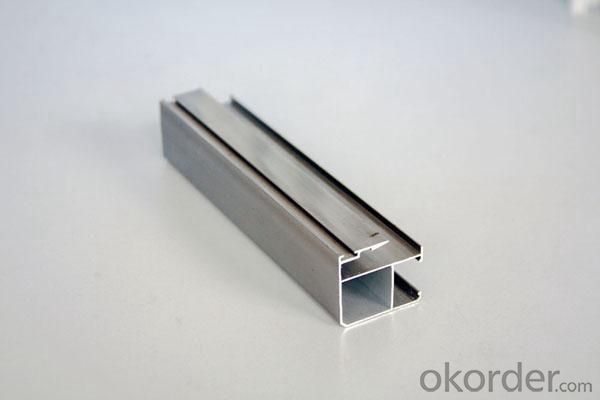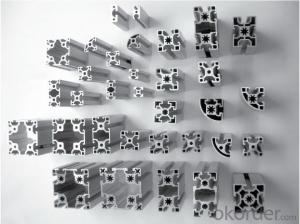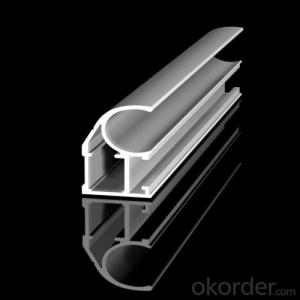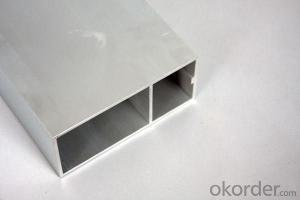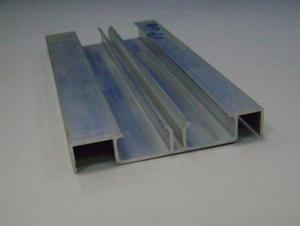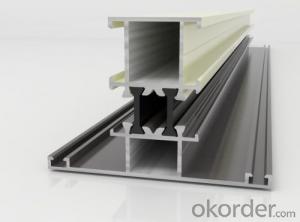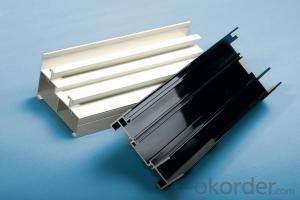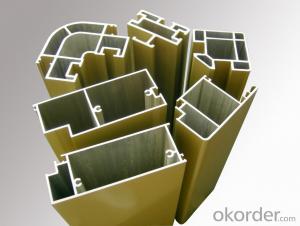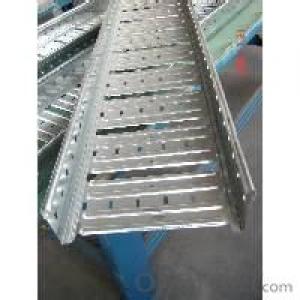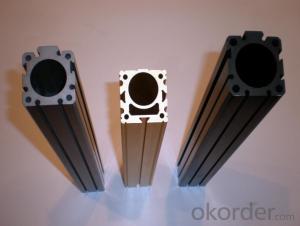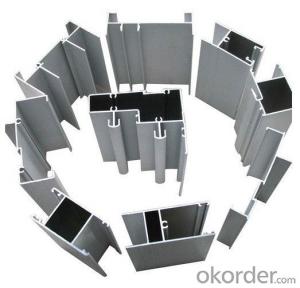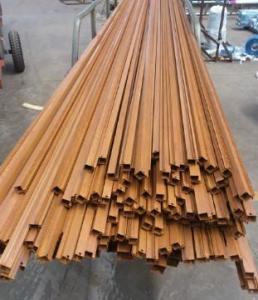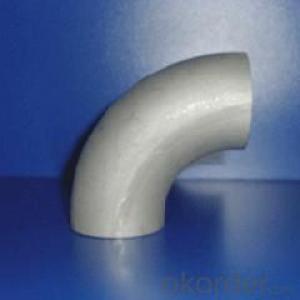Aluminum Structural Profiles - Extruded Aluminium Alloy 8080 for Equipment Framework
- Loading Port:
- Shanghai
- Payment Terms:
- TT OR LC
- Min Order Qty:
- 5 m.t.
- Supply Capability:
- 10000 m.t./month
OKorder Service Pledge
OKorder Financial Service
You Might Also Like
Specification
1. Specification of Extruded Aluminium Alloy 8080 for Equipment Framework
Alloy | AA1050,AA1060, AA1070, AA1100 |
Temper: | H12, H14, H16, H18, H22, H24, H26, H32,HO, F |
Thickness: | 0.10-500mm |
Width: | 10mm- 2200mm |
Standard: | GB/T3880-2006, ASTM, ISO, EU standard |
Special Specification is available on customer’s requirement | |
2. Application of Extruded Aluminium Alloy 8080 for Equipment Framework
wall cladding, ceilings, bathrooms, kitchens and balconies, shutters, doors,windows…
3. Feature of Extruded Aluminium Alloy 8080 for Equipment Framework
Surface Quality :
Be free from Oil Stain, Dent, Inclusion, Scratches, Stain, Oxide Decoration, Breaks, Corrosion, Roll Marks, Dirt Streaks and other defect which will interfere with use,
Mochenical Property:
Chemical Composite and Mechanical Property
4. Certificate:
SGS and ROHS(if client request, paid by client), MTC(plant provided), Certificate of Origin(FORM A, FORM E, CO), Bureau Veritas and SGS (if client request, paid by client), CIQS certificate
5. Image of Extruded Aluminium Alloy 8080 for Equipment Framework
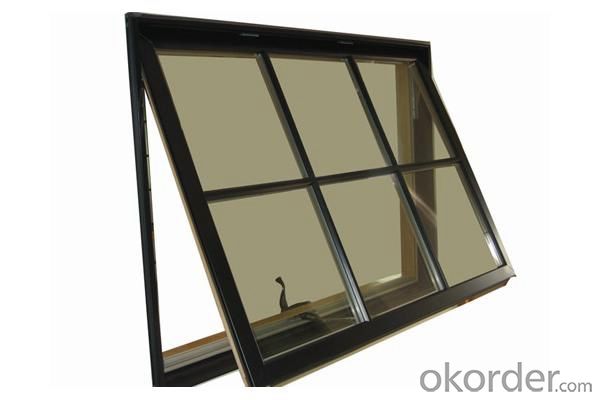
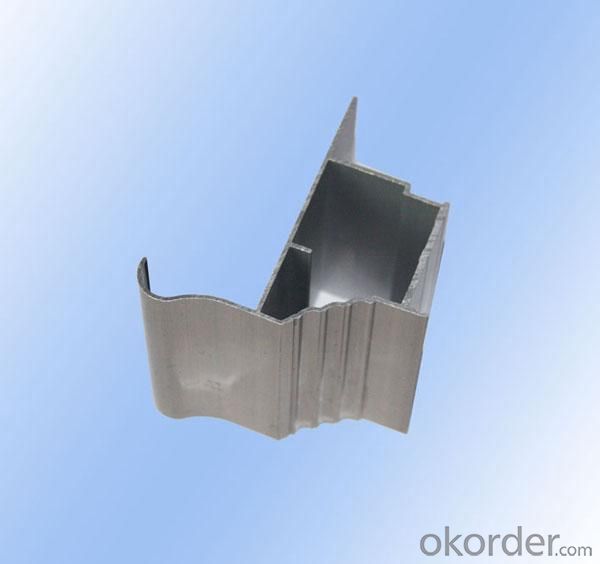
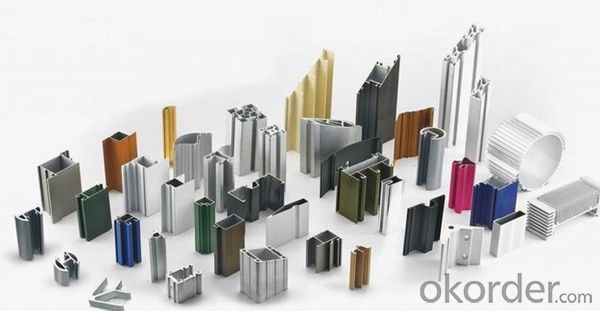
6. Package and shipping of Extruded Aluminium Alloy 8080 for Equipment Framework
First, plastic cloth with drying agent inside; Second, Pearl Wool; Third, wooden cases with dry agent, fumigation wooden pallets, aluminum surface could cover blue PVC film
7. FAQ
Question 1: What is your MOQ?
We accept one ton per type for an order. But the detail we could negotiate.
Question 2: What is your normal terms of payment?
We always trade with you by T/T. But we also accept the L/C as you require.
Question 3: How many kinds of the surface treatment we can choose?
You could choose different color of powder coated. Anodized of black. matte silver, nature, champagne, bronze color. Mill finished. Wooden finished and printed.etc.
Question 4: Can you supply OEM services?
We offer OEM services for 17 years.
Question 5: How many days for opening the mould?
Normally about 10 days.According to the difficulty of your drawing.
Question 6: Can i choose the package what i want?
Yes, of course. We offer various kinds of package.e.g.PE foam. Shrink film. Wrapping paper.
But we would give you professional suggestion of package.
- Q: Knowledge of aluminum profile warehouse management (detail)
- Warehouse management is the main task required under the factories and production equipment condition of overall planning, rational layout; to strengthen the internal economic responsibility system, scientific division, forming material export management guarantee system; business must implement the work quality standardization, application of modern management technology and the ABC classification method, and constantly improve the level of warehouse management. The main work is material inspection, income, inventory, storage and custody of materials, materials delivery, billing statements, etc.
- Q: How to prevent the aging of aluminum profile hardness is not enough?
- Raw materials, alloy, cast bar qualityDuring extrusion, the outlet temperature is guaranteed to be above the solid solution temperature,Cooling, quenching speed guaranteed as fast as possibleWhen the time limit is guaranteed, the process is executed without overheating and time is guaranteed.
- Q: How do aluminum profiles provide structural stability?
- Aluminum profiles provide structural stability through their inherent properties and design characteristics. Firstly, aluminum is a lightweight yet strong material, making it ideal for constructing various structures. Its high strength-to-weight ratio means that it can support heavy loads while minimizing the overall weight of the structure. Additionally, aluminum profiles can be designed with various shapes and cross-sections, allowing for optimal load distribution and structural integrity. These profiles can be extruded into different shapes, such as I-beams, T-sections, or rectangular profiles, which can provide enhanced strength and rigidity to the structure. Moreover, aluminum has excellent corrosion resistance, which ensures that the profiles remain durable and structurally sound even in harsh environments. This resistance to corrosion eliminates the need for frequent maintenance and extends the lifespan of the structure. Furthermore, aluminum profiles can be easily fabricated and assembled, allowing for efficient and cost-effective construction. They can be cut, drilled, welded, or fastened together to create complex structures with precise dimensions. This flexibility in fabrication and assembly ensures that the profiles can be tailored to meet specific design requirements and provide optimal structural stability. In conclusion, aluminum profiles provide structural stability through their lightweight yet strong nature, versatile design options, corrosion resistance, and ease of fabrication and assembly. These properties make aluminum profiles a preferred choice in various industries, including construction, transportation, aerospace, and many others.
- Q: Is it possible to use aluminum profiles as materials for flooring?
- <p>Aluminum profiles can indeed be used for flooring materials, particularly in industrial or commercial settings. They are valued for their strength, durability, and resistance to corrosion. Aluminum profiles are often used in modular flooring systems, providing a stable and customizable base that can be easily adjusted or reconfigured. They are also appreciated for their lightweight nature, which can reduce the load on structures and facilitate installation. However, for residential applications, traditional flooring materials like wood, tile, or carpet are more common due to aesthetic and comfort considerations.</p>
- Q: Can aluminum profiles be used in signage and display applications?
- Aluminum profiles are indeed applicable for signage and display purposes. With its lightweight and versatility, aluminum offers numerous advantages for these applications. Not only is it durable and resistant to corrosion, but it also has the ability to withstand various weather conditions, making it suitable for both indoor and outdoor use. Furthermore, aluminum profiles can be easily customized in terms of shape, size, and finish, enabling the creation of distinctive and captivating signs and displays. Additionally, the convenience of assembling and disassembling aluminum profiles makes transportation and installation hassle-free. In conclusion, aluminum profiles offer an excellent solution for signage and display applications due to their resilience, adaptability, and visual appeal.
- Q: What specific criteria or standards must be met when employing aluminum profiles in commercial construction?
- <p>Yes, there are special requirements for using aluminum profiles in commercial buildings. These include adherence to building codes and regulations, which vary by region. Profiles must meet specific strength and durability standards to ensure structural integrity. They should also comply with fire safety and energy efficiency requirements. Additionally, the profiles need to be resistant to corrosion and weathering, and must be compatible with other building materials. Aesthetic considerations, such as color and finish, are also important to match the building's design. It's crucial to work with certified suppliers and follow proper installation procedures to meet these requirements.</p>
- Q: What are aluminum profiles used for?
- Aluminum profiles have a wide range of applications in various industries. Construction and architecture are one of the primary uses of aluminum profiles. They are commonly employed in the framing of windows, doors, and curtain walls due to their lightweight yet durable characteristics. Modular structures like exhibition stands, trade show booths, and temporary shelters also utilize aluminum profiles in their construction. In the automotive industry, aluminum profiles play a crucial role in manufacturing components such as vehicle frames, roof rails, and trim parts. The lightweight properties of aluminum make it an excellent choice for enhancing fuel efficiency and reducing overall vehicle weight. Industrial machinery and equipment production also heavily relies on aluminum profiles. These profiles are used to construct machine frames, conveyor systems, and assembly lines. The versatility of aluminum profiles allows for easy customization and modification to meet specific industrial requirements. Furthermore, aluminum profiles find extensive use in furniture manufacturing and interior design. They are widely utilized in constructing shelving units, workstations, display cabinets, and partitions due to their aesthetic appeal, durability, and resistance to corrosion. The electrical and electronics industry also extensively utilizes aluminum profiles. They are employed in the manufacturing of heat sinks, enclosures, and mounting brackets. The excellent thermal conductivity of aluminum effectively dissipates heat, making it an ideal choice for electronic devices. In summary, the versatility, lightweight nature, corrosion resistance, and ease of customization make aluminum profiles highly sought after in numerous industries. They offer a wide range of applications in the construction, automotive, machinery, furniture, and electronics sectors.
- Q: This question asks about the impact of aluminum profiles on the longevity and strength of a building structure.
- <p>Aluminum profiles significantly enhance the durability of a building due to their high strength-to-weight ratio, excellent resistance to corrosion, and low maintenance requirements. They are lightweight yet strong, making them ideal for load-bearing structures and facades. Corrosion resistance means they withstand harsh weather conditions without rusting, which is common in steel profiles. This durability extends the building's lifespan and reduces the need for frequent repairs or replacements, thereby providing a cost-effective long-term solution. Additionally, aluminum profiles can be easily recycled, contributing to sustainable construction practices.</p>
- Q: What specific considerations should be taken into account when using aluminum profiles in extreme temperatures, be it cold or hot?
- <p>Aluminum profiles are generally durable and can withstand a wide range of temperatures. However, in extremely cold climates, thermal contraction can occur, potentially leading to gaps or cracks. It's important to allow for expansion and contraction in the design. In hot climates, while aluminum doesn't lose strength, it can expand and warp if not properly supported. Additionally, it can become hot to the touch, which may require protective measures to prevent burns. Always ensure that aluminum profiles are of high quality and are designed for the specific climate conditions they will be exposed to.</p>
- Q: What is the nitriding process of aluminum extrusion die?
- Aluminum extrusion die manufacturing process, extrusion die process is generally as follows:Put forward the mold task (profile drawing)HereDie design for forging blank, annealing and extrusionDown hereTurning procedure checkDown hereCoarse grinding plane, crossed through NC program tape or tapeHereDrilling and millingHereTo test the electrode machining EDM..HereHeat treatment line cutting processHereInspection and correction of grindingHereExtrusion honingHereExtrusion, mold testing and fixing the nitriding treatment
Send your message to us
Aluminum Structural Profiles - Extruded Aluminium Alloy 8080 for Equipment Framework
- Loading Port:
- Shanghai
- Payment Terms:
- TT OR LC
- Min Order Qty:
- 5 m.t.
- Supply Capability:
- 10000 m.t./month
OKorder Service Pledge
OKorder Financial Service
Similar products
Hot products
Hot Searches
Related keywords


